Approximately 20.8 million Americans (14.6 million diagnosed and 6.2 million undiagnosed) have diabetes mellitus (DM) and in 2002 it was the sixth leading cause of death, emphasizing the need for improved treatment.1 However, iatrogenic hypoglycemia precludes reaching and maintaining euglycemia. During the Diabetes Control and Complications Trial (DCCT) and United Kingdom Prospective Diabetes Study (UKPDS), outcomes of diabetes improved while hypoglycemia worsened with intensive therapy.
Approximately 20.8 million Americans (14.6 million diagnosed and 6.2 million undiagnosed) have diabetes mellitus (DM) and in 2002 it was the sixth leading cause of death, emphasizing the need for improved treatment.1 However, iatrogenic hypoglycemia precludes reaching and maintaining euglycemia. During the Diabetes Control and Complications Trial (DCCT) and United Kingdom Prospective Diabetes Study (UKPDS), outcomes of diabetes improved while hypoglycemia worsened with intensive therapy. The consequence was that hypoglycemia became the major obstacle to achieving the stated glycemic targets in these studies.2,3 As a result, hypoglycemia becomes a major barrier in improving outcomes in type 1 and type 2 DM. This has considerable financial implications as at least US$40 billion is spent each year in the US on complications of diabetes. Understanding the mechanisms and impact of hypoglycemia in diabetes is vital so that it can be addressed clinically. Furthermore, newer pharmacologic agents offer the clinician options to reduce iatrogenic hypoglycemia.
Risk factors have been identified for iatrogenic hypoglycemia, and physiologic studies have revealed the mechanisms of many of these risk factors. Predictors of severe (requiring assistance) hypoglycemia identified through the DCCT include prior history of severe hypoglycemia, longer duration of diabetes, higher baseline glycosylated hemoglobin (HbA1c), and lower treatment HbA1c4 in type 1 DM. The strongest predictor of future episodes of hypoglycemia was the number of prior episodes.5 In type 2 DM, the risk of hypoglycemia increases with disease duration and duration of insulin therapy.6,7 Counter-regulatory responses to hypoglycemia are the physiologic changes that occur to increase blood glucose and protect the body and brain from severe hypoglycemia. These responses become altered in diabetics and the pathophysiologic changes add to the above identified risk factors.
The characteristic physiologic counter-regulatory response to hypoglycemia has been described in detail elsewhere8,9 and will be briefly explained here. Hypoglycemia occurs when an imbalance of insulin and energy consumption and output (exercise) exists. As plasma glucose (pg) declines, the first counter-regulatory response is for insulin secretion to decrease. As pg continues to decline, glucagon, epinephrine, cortisol, norepinephrine and growth hormone secretion increases. Epinephrine and glucagon are the two primary counter-regulatory hormones, and their metabolic effects are seen within minutes, increasing available glucose, decreasing glucose utilization and contributing to suppression of insulin secretion. Cortisol, norepinephrine and growth hormone do not play a role in the acute defense against hypoglycemia. These later hormones only have metabolic effects during very prolonged hypoglycemia (hours) and then only one-quarter to one-fifth of the counter-regulatory actions of epinephrine and glucagon. If pg falls further, autonomic (neurogenic) symptoms (e.g. tremor, palpitations, anxiety, hunger) develop, prompting an individual to take in food. Lower pg will cause neuroglycopenic symptoms (e.g. confusion, fatigue, weakness) to develop and can be severe, including seizures or loss of consciousness. However, the more severe symptoms should not occur if the counter-regulatory system is intact and the individual increases food intake8,9 (see Figure 1).
Historically, a relative excess of exogenous insulin was considered to be the only cause of hypoglycemia in type 1 diabetes. However, our understanding of the mechanisms of counter-regulatory responses to hypoglycemia has improved significantly over the last two decades. It has been demonstrated that type 1 DM sufferers lose the ability to secrete glucagon in response to hypoglycemia after a few years of disease.10 The mechanism(s) responsible for this finding are currently a subject for intense investigation. Current plausible explanations include a lack of ‘switch-off signal’ for falling endogenous insulin levels to activate alpha-cell secretion of glucagon and/or sympathetic autonomic neuropathy. In intensively treated type 1 DM, the epinephrine response is suppressed for a given level of hypoglycemia and the glycemic threshold for a response is decreased.11,12 (Glycemic threshold is the pg level that activates a counter-regulatory response.) The combination of absent glucagon and reduced epinephrine responses in type 1 DM increases the risk of severe hypoglycemia up to 25 fold.8 Downward shifts of glycemic thresholds are also contributors to the development of the syndrome of hypoglycemia unawareness (HU). Insulin-dependent diabetics with HU do not develop symptoms (either autonomic or neuroglycopenic) until their pg is close to a level where loss of consciousness may occur.13
Hypoglycemia-associated autonomic failure (HAAF) is a syndrome consisting of defective glucose counter-regulation (particularly of the critical counter regulatory hormone epinephrine) with HU, resulting from antecedent hypoglycemia.8 The role of antecedent hypoglycemia as the cause of HAAF is supported by numerous studies in non-diabetics and type 1 and type 2 DM;8 however, there is still considerable debate as to the mechanisms by which recent hypoglycemia causes HAAF.14 Several studies have demonstrated that strict avoidance of hypoglycemia in type 1 DM can reverse HU.15–18 Several studies have also reported a recovery of epinephrine secretion,15,17,18 but this has not been an undisputed finding.16 Exercise can also result in HAAF,19 as antecedent exercise blunts counter-regulatory responses to hypoglycemia20 and antecedent hypoglycemia blunts counter-regulatory responses to exercise.21 This new knowledge allows clinicians to modulate insulin dosage (reduce) and carbohydrate intake (increase) to prevent exercise-associated hypoglycemia. Additionally, the role sleep plays in hypoglycemic counter-regulatory failure has recently been elucidated.Type 1 DM patients are less likely to be awakened by hypoglycemia and have reduced levels of epinephrine when hypoglycemic during sleep.19 Even though precise mechanisms of HAAF are still under investigation, this concept needs to be incorporated into clinical approaches when addressing recurrent episodes of hypoglycemia.
Type 2 DM has an array of phenotypes that can respond differently to hypoglycemia. The UKDPS clearly indicated that type 2 DM patients receiving insulin therapy have increased hypoglycemic events compared with those on oral antidiabetic agents (OADs).22 The study also established the progressive nature of the disease with subjects requiring increasing numbers of oral agents and insulin with time. Insight into how hypoglycemia effects type 2 diabetics at different stages of the disease has been the focus of a few recent studies. Levy et al. reported that the glucagon response to hypoglycemia is preserved in non-insulin-requiring type 2 DM. The glycemic threshold for epinephrine and norepinephrine release increased as HbA1c increased and for each level it was greater in type 2 than in type 1 DM;23 conversely, the threshold decreased as HbA1c decreased.
Segel et al.24 compared counter-regulatory responses to hypoglycemia in both insulin-requiring and non-insulin-requiring type 2 DM. Their work supported the finding that non-insulin-requiring type 2 diabetics maintain a glucagon response to hypoglycemia but that insulin requiring type 2 diabetics have a nearly absent glucagon response similar to type 1 DM. This study also demonstrated that recent antecedent hypoglycemia lowered glycemic thresholds in type 2 DM for epinephrine, norepinephrine and autonomic symptoms. They concluded that advanced insulin-requiring type 2 diabetics are at risk of HAAF since they lack a glucagon response, and recurrent hypoglycemia attenuates epinephrine response and shifts the glycemic threshold for autonomic symptoms.24
Type 1 diabetics may have asymptomatic hypoglycemia 10% of the time and have symptomatic hypoglycemia twice a week.8 A comparison of insulin-treated type-1 and type-2 DM reported the frequency of hypoglycemia as 43 versus 16 events per patient year and the frequency of severe hypoglycemia as 1.15 versus 0.35 per patient year, respectively.7 Other sources have indicated the rates of severe hypoglycemia in type 1 and insulin-requiring type 2 to be as high as 62–170 episodes per 100 patient-years and three to 73 episodes per 100 patient-years, respectively.8
There are limited data on the healthcare cost of iatrogenic hypoglycemia. Analysis of healthcare claims from five large employers revealed significant differences between insulin-requiring diabetic employees with hypoglycemia and those without hypoglycemia. Of the employees with hypoglycemia, hospitalization and emergency room visits were doubled and there was an excess medical expenditure of US$3,241 per patient directly related to hypoglycemia. Furthermore, comparing the group with hypoglycemia with those without, the rates of short-term disability (work absence related to health problems) were 19.5 versus 11 days per person-year, respectively.25 Another claims analysis revealed that during a six-year follow-up, 16% of insulin-treated DM patients had an episode of hypoglycemia requiring medical attention with the mean cost per episode at US$1,186.26
A retrospective claims analysis in Medicaid patients in California evaluated the cost differential before and after six months of glargine insulin treatment, which has a reduced hypoglycemia profile. It was reported that the glargine group had a total diabetes-related cost reduction of US$69 per person during the first six months despite an increase in pharmacy claims. The inpatient claims decreased by US$96 per patient and there was a decline in hypoglycemia-related in-patient claims from 9.5% to 3.8%.27 Even though there are very limited data on strategies to decrease the financial burden of hypoglycemia, this study supports that even short-term cost savings can occur with interventions that decrease hypoglycemia.
Sulfonylureas (oral insulin secretagogues) were the first class of pharmacologic agents available for type 2 DM and remain a mainstay of therapy.However, they are the oral agent class most commonly complicated by hypoglycemia.28,29 More commonly used sulfonylureas include second-generation glibenacamide (glyburide), gliclazide (not available in US), and glipizide, and third-generation glimepiride.29 First-generation agents, such as chlorpropamide, are now rarely initiated due to side effects including frequent hypoglycemia.30 Population studies based in clinical practice have indicated increased episodes of severe hypoglycemia with glyburide compared with glimepiride31 and gliclazide.32 It is well-established that older long-acting sulfonylureas, such as chlorpropamide and glyburide, increase the prevalence of hypoglycemia compared with short-acting agents,31–33 as these agents cause a greater mis-match in insulin release related to glucose availability. Randomized double-blind comparisons of glyburide to glimepiride34 and gliclazide35 demonstrated equivalent glycemic control (HbA1c) but increased hypoglycemia with glyburide. Glipizide is available in an immediate and an extended-release formulation. The extended release has been shown to offer equivalent glycemic control to glyburide. The authors did not specifically comment on differences in hypoglycemic events between the two drugs. However, extended-release glipizide dispensed in the morning did not show a significant change in fasting or 24-hour insulin unlike glyburide, which produced an increase in both. From this the authors proposed that extended-release glipizide may present a reduced risk of hypoglycemia compared with glyburide.36 The European GUIDE study compared once-daily monotherapy of gliclazide modified release (MR) with glimepiride. Results included equivalent glycemic control and no major hypoglycemia in either group, but there was significantly less hypoglycemia with gliclazide MR (3.7% versus 8.9%).37 The equivalent glycemic control with different hypoglycemic profiles offers some clinical options for managing hypoglycemia related to sulfonylurea treatment.
Insulin sensitizer OADs per se are associated with less-frequent hypoglycemia. Metformin, a biguanide, offers equivalent glycemic control to a sulfonylurea. Metformin can lower insulin concentrations,38 contributing to its rare association with hypoglycemia when used as monotherapy.22,38 Hypoglycemia has been seen with metformin in association with limited food intake.28 Thiazolidinediones (rosiglitazone, pioglitazone) are insulin sensitizers that activate peroxisome proliferator-activated receptor gamma (PPAR-γ) and hypoglycemia is not considered as a risk when used in monotherapy.39 However, care must be taken when combining insulin sensitizers with insulin as this may produce hypoglycemia due to a relative increase in insulin action.
Repaglinide and nateglinide are short-acting non-sulfonyurea insulin secretagogues administered at meal time. Head-to-head monotherapy with repaglinide and nateglinide revealed repaglinide to have a lower HbA1c at 16 weeks (7.3% versus 7.9%). Even though no major hypoglycemic episodes occurred in either group, there was increased minor hypoglycemia with repaglinide (7% versus 0%).40 Repaglinide clearly has more hypoglycemia than nateglinide and less than some sulfonylureas.41–43 Acarbose, militol and voglibose competitively inhibit alpha glucosidase from delaying the absorption of carbohydrates, yielding lower postprandial blood glucose and insulin levels. Based on their mechanisms of action, hypoglycemia is not a side effect of these drugs.44 Alpha glucosidase inhibitors are rarely associated with hypoglycemia when used in monotherapy but, as with insulin sensitizers, these agents may have increased incidence of hypoglycemia when used in combination with a sulfonylurea or insulin.
Discovery of endogenous peptides has offered novel approaches to diabetes management. The incretin mimetic exenatide (exendin-4) was US Food and Drug Administration (FDA)-approved in 2005 for use with sulfonylureas or metformin in type 2 DM.45 Trials have compared exenatide injections with placebo and demonstrated decreases in HbA1c of around 1%.46–48 When patients are on metformin alone there is no increase in hypoglycemia,46 but with metformin and sulfonylurea47 or sulfonylurea alone48 there is a dose-dependent increase in mild hypoglycemia. A trial comparing insulin glargine verses exenatide in poorly controlled type 2 diabetics on OADs reported similar glycemic control and rates of symptomatic hypoglycemia, but less nocturnal hypoglycemia in the exenatide arm.49 Pramlintide, an injectable amylin analog, is approved for type 1 or type 2 DM on prandial insulin therapy. In trials, total insulin dose in the pramlintide arm was reduced50 and in practice insulin doses are commonly reduced by more than 50% to prevent hypoglycemia. Although pramlintide per se does not cause hypoglycemia, care must be taken when combined with insulin as severe cases of hypoglycemia have been reported when insulin doses are not reduced.
Of the current therapeutic options in DM, insulin carries the greatest risk of hypoglycemia,28 yet its use is essential in type 1 DM and becomes inevitable in many type 2 diabetics. In the UKPDS, by nine years the majority of patients required multiple therapies to achieve the glycemic goal and many needed the addition of insulin, indicating the progressive decline in beta-cell function.51 Multiple approaches to initiating insulin have been explored. Rosentock et al. completed a meta-analysis of four randomized trials comparing the long-acting insulin analog glargine and neutral protamine hagedorn (NPH) insulin. Three trials compared bedtime injections of the insulins while taking OADs, and the fourth trial was glargine once at bedtime or NPH once or twice daily while taking regular human insulin. The meta-analysis revealed glargine caused significantly less severe and nocturnal hypoglycemia with equivalent glycemic control at 20–28 weeks.52 One of these trials in insulin-naïve type 2 diabetics was carried out to 52 weeks and at the end glycemic control remained equivalent, yet glargine caused significantly less nocturnal hypoglycemia (9.9% versus 24%).53 If NPH is going to be used as basal insulin, administering the afternoon dose at bedtime rather than with dinner significantly reduces nocturnal hypoglycemia and lowers HbA1c.54
Another approach to starting insulin in type 2 diabetics with poor glycemic control is adding pre-mixed insulin. The Initiation of Insulin to Reach A1c Target (INITIATE) trial, a 28-week trial in insulin-naïve type 2 diabetics with HbA1c greater than 8%, randomized subjects on metformin to either twice-daily biphasic insulin aspart 70/30 (BIAsp 70/30) or bedtime glargine. Minor hypoglycemic events (defined as under 56mg/dl) occurred five times more frequently in the BIAsp 70/30 group (3.4±6.6 versus 0.7±2.0). However, BIAsp did offer better improvement in HbA1c.55 Another study in type 2 DM compared initiating glargine while taking metformin and glimepiride to stopping all OADs and starting human insulin 70/30.The glargine arm resulted in a significantly better reduction in HbA1c and less nocturnal hypoglycemia.56
Literature reviews have revealed no head to head comparisons of pre-mixed insulin to multiple daily injections (MDIs); nonetheless it is agreed that MDIs with a basal bolus regimen is the more physiologic regimen.57,58The standard pre-mixed twice-daily regimen dose not offer prandial coverage for lunch and does not allow adjustment for pre-meal hyperglycemia.59 The three most common pre-mixed insulins available in the US that have been compared in trials include two pre-mixed insulin analogs, BIAsp 70/30 and insulin lispro 75/25, and human insulin 70/30. Two reviews have concluded that HbA1c and hypoglycemic risks are equivalent; however, the reviewers commented that due to differences in study design and reporting it was difficult to make direct comparisons.57,60
Insulin analogs present a reduced risk of hypoglycemia compared with traditional human insulins. This has already been touched upon when comparing glargine and NPH. A meta-analysis comparing lispro with regular insulin for prandial coverage in type 1 diabetics (NPH or ultralente for basal) revealed a significant reduction in severe hypoglycemic events in subjects taking lispro.61 In adolescent type 1 diabetics, a cross-over trial comparing different basal bolus insulin therapies reported that lispro with bedtime glargine decreased nocturnal hypoglycemia compared with regular insulin with bedtime NPH.62 Similar to lispro, aspart causes significantly less nocturnal hypoglycemia than regular insulin.63 The new short-acting insulin analog, glulisine, has also been demonstrated to result in less hypoglycemia than regular insulin. Basal insulin analog insulin detemir (approved but not yet commercially available in US) has been compared with NPH insulin in various basal bolus regimens in type 1 and type 2 DM. Glycemic control was equivalent, and insulin detemir was reported to have a 26–38% risk reduction of nocturnal hypoglycemia,64–66 similar to the benefits of glargine over NPH as discussed above.
Besides selecting an agent with a reduced potential for hypoglycemia, certain treatment strategies also decrease hypoglycemia. Continuous subcutaneous insulin infusion (CSII) is a method for physiologic replacement of insulin. In type 1 DM, CSII improves glycemic control and causes less hypoglycemia compared with MDIs in adolescents,67 and less than conventional insulin therapy in adults.68 MDI and CSII appear equivalent with regard to glycemic control and level of hypoglycemia in type 2 DM.69,70 Newer glucose sensor-driven CSII pumps are on the horizon with the promise of improved glucose control with less hypoglycemia.
Reports from the DCCT and UKPDS have emphasized that improved glycemic control reduces tissue complications of diabetes; unfortunately hypoglycemia is increased, which creates a major obstacle to good glycemic control. Hypoglycemia is the complication of diabetes most feared by patients. At least US$40 billion is spent on complications of diabetes per year in the US. The concept of HAAF, explains that prior hypoglycemia increases the risk of future hypoglycemia and that patients have individual glycemic thresholds for counter-regulatory response to hypoglycemia. The DCCT also demonstrated that the strongest predictor of future hypoglycemia was the number of prior episodes. Furthermore, studies have demonstrated that nocturnal and exercise-related hypoglycemia also contribute importantly to HAAF, which provides challenges for clinicians and patients to manage. Many anti-diabetic therapies are available and fortunately some offer lower hypoglycemic risks with equivalent glycemic control. When selecting a therapy, the agent’s entire side effect and benefit profile must be taken into consideration. Also, an individual patient’s capabilities, resources, and willingness to accept tailored and, at times, more complex therapies should be assessed. Once these issues have been addressed, the clinician has options to overcome the obstacle of iatrogenic hypoglycemia and decrease the burden it brings to the patient and the healthcare system. ■
Hypoglycemia—The Major Barrier to Good Glycemic Control
Article
References
- Centers for Disease Control and Prevention, “National diabetes fact sheet: national estimates on diabetes”, (2005) Available at www.cdc.gov/diabetes/pubs/estimates.htm. Accessed January 14, 2006.
- The Diabetes Control and Complications Trial Research Group, “The effect of intensive treatment of diabetes on the development and progression of long-term complications in insulin-dependent diabetes mellitus”, N Engl J Med (1993);329(14): pp. 977–986.
- UK Prospective Diabetes Study (UKPDS) Group, “Intensive blood-glucose control with sulphonylureas or insulin compared with conventional treatment and risk of complications in patients with type 2 diabetes (UKPDS 33)”, Lancet (1998);352(9131): pp. 837–853.
- The DCCT Research Group, “Abstract – Epidemiology of severe hypoglycemia in the diabetes control and complications trial”, Am J Med (1992);92(3): pp. 339–340.
- The Diabetes Control and Complications Trial Research Group,“Hypoglycemia in the Diabetes Control and Complications Trial”, Diabetes (1997);46(2): pp. 271–286.
- Henderson J N, Allen K V, Deary I J, Frier B M, “Hypoglycaemia in insulin-treated Type 2 diabetes: frequency, symptoms and impaired awareness”, Diabetic Medicine (2003);20(12): pp. 1,016–1,021.
- Donnelly L A, Morris A D, Frier B M et al., “Frequency and predictors of hypoglycaemia in Type1 and insulin-treated Type 2 diabetes: a population-based study”, Diabetic Medicine (2005);22(6): pp. 749–755.
- Cryer P E, Davis S N, Shamoon H,“Hypoglycemia in diabetes” Diabetes Care (2003);26(6): pp. 1,902–1,912.
- Diedrich L, Sandoval D, Davis S N, “Hypoglycemia associated autonomic failure”, Clinical Autonomic Research (2002);12(5): pp. 358–365.
- Gerich J L M, Noacco C, Karam J, Forsham P H, “Lack of a glucagon response to hypoglycemia in diabetes: eveidence for an intrinsic pancreatic alpha-cell defect”, Science (1973);182: pp. 171–173.
- Amiel S A, Sherwin R S, Simonson D C,Tamborlane W V,“Abstract – Effect of intensive insulin therapy on glycemic thresholds for counterregulatory hormone release”, Diabetes (1988);37(7): pp. 901–907.
- Davis M, Mellman M, Friedman S, Chang C J, Shamoon H,“Abstract – Recovery of epinephrine response but not hypoglycemic symptom threshold after intensive therapy in type 1 diabetes”, Am J Med (1994);97(6): pp. 535–542.
- Cryer P E, “Symptoms of hypoglycemia, thresholds for their occurrence, and hypoglycemia unawareness”, Endocrinol Metab Clin North Am (1999);28(3): pp. 495–500.
- Cryer P E, “Mechanisms of hypoglycemia-associated autonomic failure and its component syndromes in diabetes”, Diabetes (2005);54(12): pp. 3,592–3,601.
- Fanelli C, Pampanelli S, Epifano L et al.,“Abstract – Long-term recovery from unawareness, deficient counterregulation and lack of cognitive dysfunction during hypoglycaemia, following institution of rational, intensive insulin therapy in IDDM”, Diabetologia (1994);37(12): pp. 1,265–1,276.
- Dagogo-Jack S, Rattarasarn C, Cryer P E, “Abstract – Reversal of hypoglycemia unawareness, but not defective glucose counterregulation, in IDDM”, Diabetes (1994);43(12): pp. 1,426–1,434.
- Cranston I, Lomas J, Maran A, Macdonald I, Amiel S A, “Abstract – Restoration of hypoglycaemia awareness in patients with long-duration insulin-dependent diabetes”, Lancet (1994);344(8918): pp. 283–287.
- Liu D, McManus R M, Ryan E A, “Abstract – Improved counter-regulatory hormonal and symptomatic responses to hypoglycemia in patients with insulin-dependent diabetes mellitus after 3 months of less strict glycemic control”, Clin Invest Med (1996);19(2): pp. 71–82.
- Cryer P E, “Diverse causes of hypoglycemia-associated autonomic failure in diabetes”, N Engl J Med (2004);350(22): pp. 2,272–2,279.
- Galassetti P, Mann S, Tate D et al., “Effects of antecedent prolonged exercise on subsequent counter-regulatory responses to hypoglycemia”, Am J Physiol Endocrinol Metab (2001);280(6): pp. E908–E917.
- Ertl A C, Davis S N, “Evidence for a vicious cycle of exercise and hypoglycemia in type 1 diabetes mellitus”, Diabetes Metab Res Rev (2004);20(2): pp. 124–130.
- United Kingdom Prospective Diabetes Study 24, “A 6-year, randomized, controlled trial comparing sulfonylurea, insulin, and metformin therapy in patients with newly diagnosed type 2 diabetes that could not be controlled with diet therapy”, Ann Intern Med (1998);128(3): pp. 165–175.
- Levy C, Kinsley B, Bajaj M, Simonson D, “Effect of glycemic control on glucose counterregulation during hypoglycemia in NIDDM”, Diabetes Care (1998);21(8): pp. 1,330–1,338.
- Segel S A, Paramore D S, Cryer P E, “Hypoglycemia-associated autonomic failure in advanced type 2 diabetes”, Diabetes (2002);51(3): pp. 724–733.
- Rhoads G G et al., “Contribution of hypoglycemia to medical care expenditures an short-term disability in employees with diabetes”, J Occup Environ Med (2005);47: pp. 447–452.
- Heaton A, Martin S, Brelje T, “Abstract –The economic effect of hypoglycemia in a health plan”, Manag Care Interface (2003);16(7): pp, 23–27.
- Zhang O, Meditto L, “Incremental cost savings 6 months following initiation of insulin glargine in a Medicaid fee-for-service sample”, Am J Ther (2005);12: pp. 337–343.
- Zammitt N, Frier B,“Hypoglycemia in Type 2 diabetes. Pathophysiology, freqnecy and effects of treatment modalities”, Diabetes Care (2005);28(12): pp. 2,948–2,960.
- Rendell M,“The role of sulphonylureas in the management of type 2 diabetes mellitus”, Drugs (2004);64(12): pp. 1,339–1,358.
- Davis S N,“The role of glimepiride in the effective management of Type 2 diabetes”, J Diabetes Complications (2004);18(6): pp. 367–376.
- Holstein A, Plaschke A, Egberts E, “Lower incidence of severe hypoglycaemia in patients with type 2 diabetes treated with glimepiride versus glibenclamide”, Diabetes Metab Res Rev (2001);17: pp. 467–473.
- Stahl M, Berger W,“Higher incidence of severe hypoglycemia leading to hospital admission in Type 2 diabetic patients treated with long-acting verses short-acting sulphonylureas”, Diabet Med (1999);16: pp. 586–590
- Seltzer H S, “Drug-induced hypoglycemia. A review of 1418 cases”, Endocrinol Metab Clin North Am (1989);18(1): pp. 163–183.
- Draeger K E,Wernicke-Panten K, Lomp H J, Schuler E, Rosskamp R, “Abstract – Long-term treatment of type 2 diabetic patients with the new oral antidiabetic agent glimepiride (Amaryl): a double-blind comparison with glibenclamide”, Horm Metab Res (1996);28(9): pp. 419–425.
- Tessier D, Dawson K,Tetrault J P, Bravo G, Meneilly G S, “Abstract – Glibenclamide vs gliclazide in type 2 diabetes of the elderly”, Diabet Med (1994);11(10): pp. 974–980.
- Go E, Berelowitz M, “Effects of glipizide GITS and glibenclamide on metabolic control, hepatic glucose production, and insulin secretion in patients with type 2 diabetes”, Diabetes Metab Res Rev (2004);20(3): pp. 225–231.
- Schernthaner G, Grimaldi A, Di Mario U et al., “GUIDE study: double-blind comparison of once-daily gliclazide MR and glimepiride in type 2 diabetic patients”, Eur J Clin Invest (2004);34(8): pp. 535–542.
- Bailey C J,Turner C J, “Metformin”, N Engl J Med (1996);334(9): pp. 574–579.
- Diamant M, Heine R, “Thiazolidinediones in Type 2 diabetes mellitus: current clinical evidence”, Drugs (2003); 63(13): pp. 1,373–1,405
- Rosentock J et al., “Repaglinide verses nateglinide monotherapy, a randomized, multicenter study”, Diabetes Care (2004);27: pp. 1,265–1,270.
- Madsbad S, Kilhovd B, Lager I, Mustajoki P, Dejgaard A, “Comparison between repaglinide and glipizide in Type 2 diabetes mellitus: a 1-year multicentre study”, Diabet Med (2001);18(5): pp. 395–401.
- Marbury T, Huang W, Strange, P, Levobitz H, “Repaglinide versus glyburide: a one-year comparison trial”, Diabetes Res Clin Practice (1999);43: pp. 155–166.
- Kristen J S, Frandsen K B, Bayer T, Muller P G, “Abstract – Compared with repaglinide, sulfonylurea treatment in Type 2 diabetes is associated with a 2.5-fold increase in symptomatic hypoglycemia with blood glucose levels <45 mg/dl”, ADA, Inc. (2000);49 (Suppl 1): p A131
- Scheen A J, “Is there a role for α-glucosidase inhibitors in the prevention of Type 2 diabetes mellitus?”, Drugs (2003);63(10): pp. 933–951
- U.S. Food and Drug Administration website. Patient Information Sheet http://www.fda.gov/cder/drug/InfoSheets/patient/exenatidePIS.htm. Accessed January 24, 2006.
- DeFronzo R A et al.,“Effects of exenatide (exendin-4) on glycemic control and weight over 30 weeks in metformin-treated patients with type 2 diabetes”, Diabetes Care (2005);28: pp. 1,092–1,100.
- Kendall D M et al., “Effects of exenatide (exendin-4) on glycemic control over 30 weeks in patients with type 2 diabetes treated with metformin and a sulfonylurea”, Diabetes Care (2005);28: pp. 1,083–1,091.
- Buse J B et al., “Effects of exenatide (exendin-4) on glycemic control over 30 weeks in sulfonylurea-treated patients with type 2 diabetes”, Diabetes Care (2004);27: pp. 2,628–2,635.
- Heine R J,Van Gaal L F, Johns D et al., “Exenatide versus insulin glargine in patients with suboptimally controlled type 2 diabetes: a randomized trial”, Ann Intern Med (2005);143(8): pp. 559–569.
- Ratner R et al.,“Adjunctive therapy with pramlintide lowers HbA1c without concomitant weight gain and increased risk of severe hypoglycemia in patients with type 1 diabetes approaching glycemic targets”, Exp Clin Endocrinol Diabetes (2005);113: pp. 199–204.
- Turner R C, Cull C A, Frighi V, Holman R R, for the UK Prospective Diabetes Study Group, “Glycemic control with diet, sulfonylurea, metformin, or insulin in patients with type 2 diabetes mellitus: progressive requirement for multiple therapies”, UKPDS 49.
- Rosenstock J et al., “Reduced hypoglycemia risk with insulin glargine: a meta-analysis comparing insulin glargine with human NPH insulin in type 2 diabetes”, DiabetesCare (2005);28: pp. 950–955.
- Yki-Jarvinen H, Dressler A, Ziemen M,“Less nocturnal hypoglycemia and better post-dinner glucose control with bedtime insulin glargine compared with bedtime NPH insulin during insulin combination therapy in type 2 diabetes”, HOE 901/3002 Study Group.
- Fanelli C G, Pampanelli S, Porcellati F et al., “Administration of neutral protamine hagedorn insulin at bedtime versus with dinner in type 1 diabetes mellitus to avoid nocturnal hypoglycemia and improve control: a randomized, controlled trial”, Ann Intern Med (2002);136(7): pp. 504–514.
- Raskin P, Allen E, Hollander P et al., “Initiating insulin therapy in type 2 diabetes: a comparison of biphasic and basal insulin analogs”, Diabetes Care (2005);28(2): pp. 260–265.
- Janka H U, Plewe G, Riddle M C et al.,“Comparison of basal insulin added to oral agents versus twice-daily premixed insulin as initial insulin therapy for type 2 diabetes”, Diabetes Care (2005);28(2): pp. 254–259.
- Rolla A R, Rakel R E, “Practical approaches to insulin therapy for type 2 diabetes mellitus with premixed insulin analogues. Clinical Therapeutics (2005);27(8): pp. 1,113–1,125.
- DeWitt D E, Hirsch I B, “Outpatient insulin therapy in type 1 and type 2 diabetes mellitus: scientific review”, JAMA (2003);289(17): pp. 2,254–2,264.
- Hirsch I, “Insulin analogues”, N Engl J Med (2005);352: pp. 174–183.
- Garber A J,“Premixed insulin analogues for the treatment of diabetes mellitus”, Drugs (2006);66(1): pp. 31–49.
- Brunelle R M, Llewelyn J, Anderson J, Gale E, Koivisto V, “Meta-analysis of the effect of insulin lispro on severe hypoglycemia in patients with type 1 diabetes”, Diabetes Care (1998);21(10): pp. 1,726–1,731.
- Murphy N P, Keane S M, Ong K K et al., “Randomized cross-over trial of insulin glargine plus lispro or NPH insulin plus regular human insulin in adolescents with type 1 diabetes on intensive insulin regimens”, Diabetes Care (2003);26(3): pp. 799–804.
- Heller S R, Colagiuri S,Vaaler S et al.,“Hypoglycaemia with insulin aspart: a double-blind, randomised, crossover trial in subjects with Type 1 diabetes”, Diabet Med (2004);21(7): pp. 769–775.
- Satndl E, Lang H, Roberts A,“The 12-month efficacy and safety of insulin detemir and NPH insulin in basal-bolus therapy for the treatment of type 1 diabetes”, Diabetes Technol Ther (2004);6(5): pp. 579–587.
- Raslova K, Bogoev M, Raz I et al., “Insulin detemir and insulin aspart: a promising basal-bolus regimen for type 2 diabetes”, Diabetes Res Clin Prac (2004);66(2): pp. 193–201.
- Russell-Jones D, Simpson R, Hylleberg B, Draeger E, Bolinder J,“Effects of QD insulin detemir or neutral protamine Hagedorn on blood glucose control in patients with type I diabetes mellitus using a basal-bolus regimen”, Clin Therapeutics (2004);26(5): pp. 724–736.
- Boland E A et al.,“Continuous subcutaneous insulin infusion.A new way to lower risk of severe hypoglycemia, improve metabolic control, and enhance coping in adolescents with type 1 diabetes”, Diabetes Care (1999);22: pp. 1,779–1,784.
- Linkeschova R et al.,“Less severe hypoglycaemia, better metabolic control, and improved quality of life in Type 1 diabetes mellitus with continuous subcutaneous insulin infusion (CSII) therapy; an observational study of 100 consecutive patients followed for a mean of 2 years”, Diabet Med (2002);19: pp. 746–751.
- Herman W H et al., “A clinical trial of continuous subcutaneous insulin infusion versus multiple daily injections in older adults with Type 2 diabetes”, Diabetes Care (2005);(28): pp. 1,568–1,573.
- Raskin, P et al., “Continuous subcutaneous insulin infusion and multiple daily injection therapy are equally effective in type 2 diabetes”, Diabetes Care (2003);26: pp. 2,598–2,603.
xx. Schmitz O, Birgette B, Jorgen R, “Amylin agonists: a novel approach in the treatement of
- diabetes”, Diabetes (2004);53 (Suppl 3): pp. S233–S238.
Further Resources

Trending Topic
We are pleased to present the latest issue of touchREVIEWS in Endocrinology, which offers a timely and thoughtprovoking collection of articles that reflect both the continuity and evolution of diabetes and metabolic disease research. In an era where technology, public health priorities and clinical paradigms are shifting rapidly, this issue highlights the importance of evidence-based […]
Related Content in Diabetes
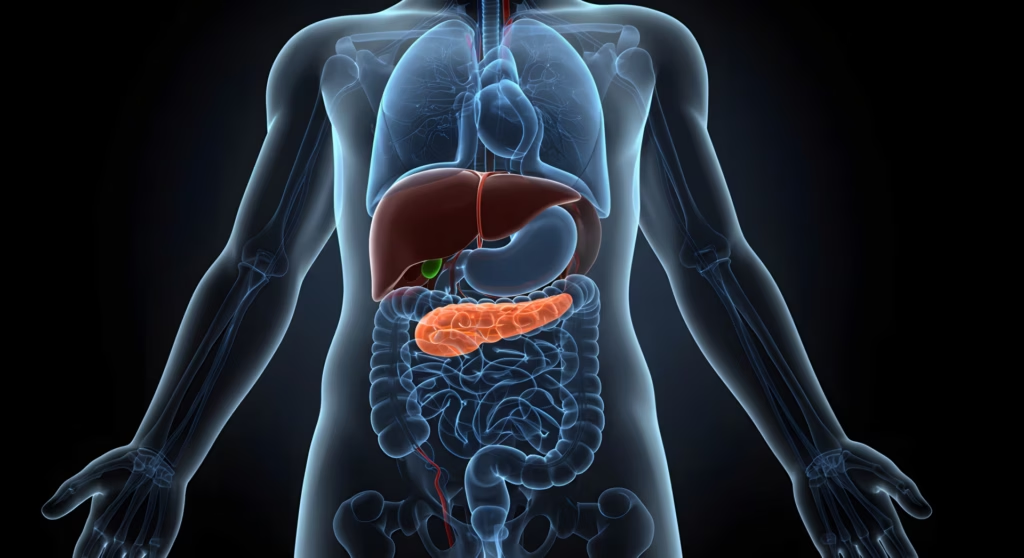
Coronavirus disease 2019 (COVID-19) is a life-threatening infection caused by severe acute respiratory syndrome coronavirus 2 (SARS-CoV-2).1 Diabetes mellitus is one of the most frequent comorbidities, related to hospitalization due to SARS-CoV-2 infection, as well as a risk factor for disease severity, ...
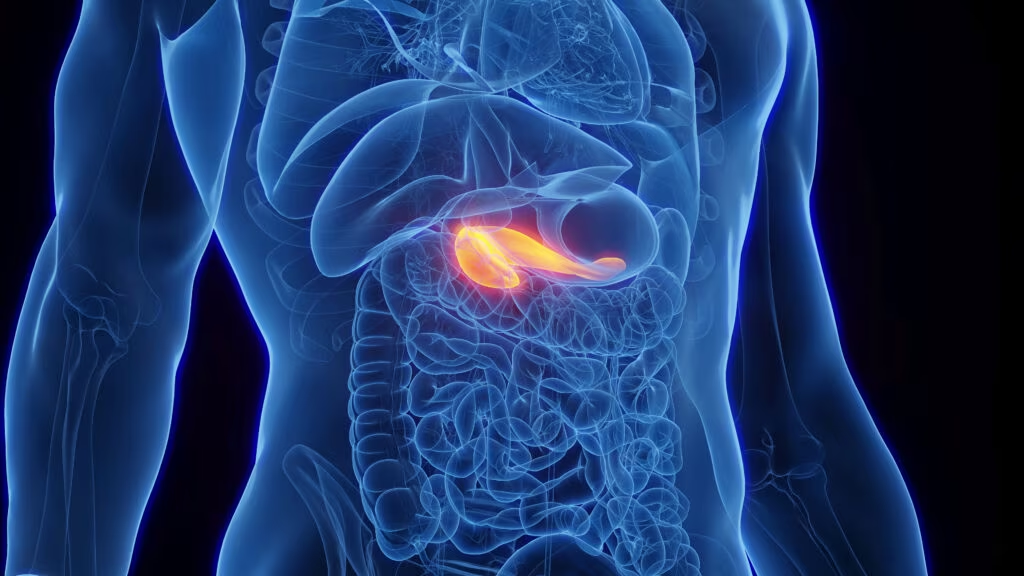
Diabetes is a chronic disease associated with both acute and chronic complications. Many advances have been introduced throughout history to address these problems. While each clinical breakthrough was welcomed with relief and the expectation that a solution had been discovered, ...
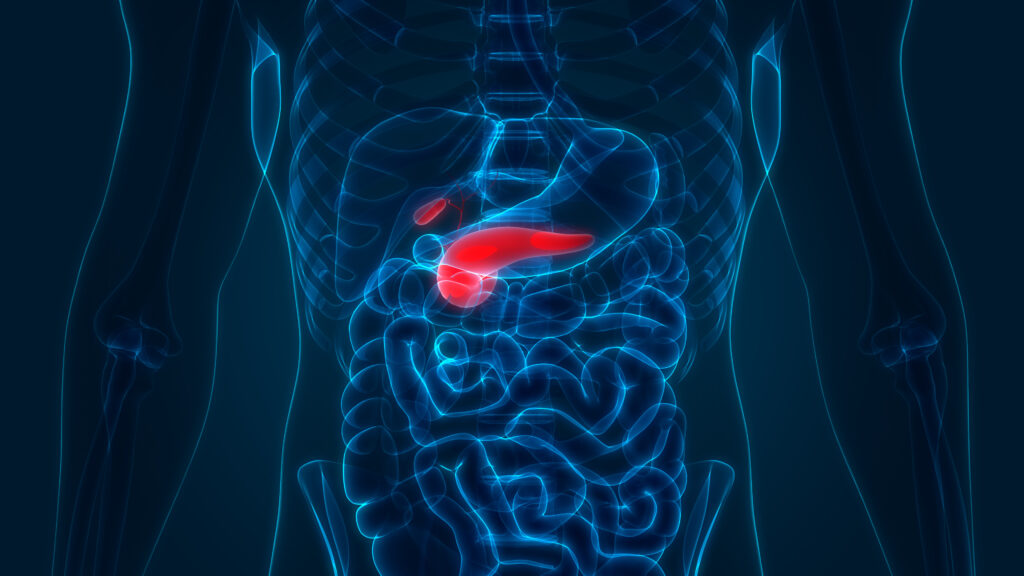
Article Highlights Early use of sodium–glucose co-transporter-2 inhibitors following myocardial infarction was associated with the following factors: Lower hospitalization for heart failure (odds ratio [OR]: 0.75; 95% confidence interval [CI]: 0.62–0.90; p=0.002). Similar cardiovascular deaths (OR: 1.04; 95% CI: 0.83–1.30; p=0.76). Similar all-cause mortality (OR: 1.00; 95% ...
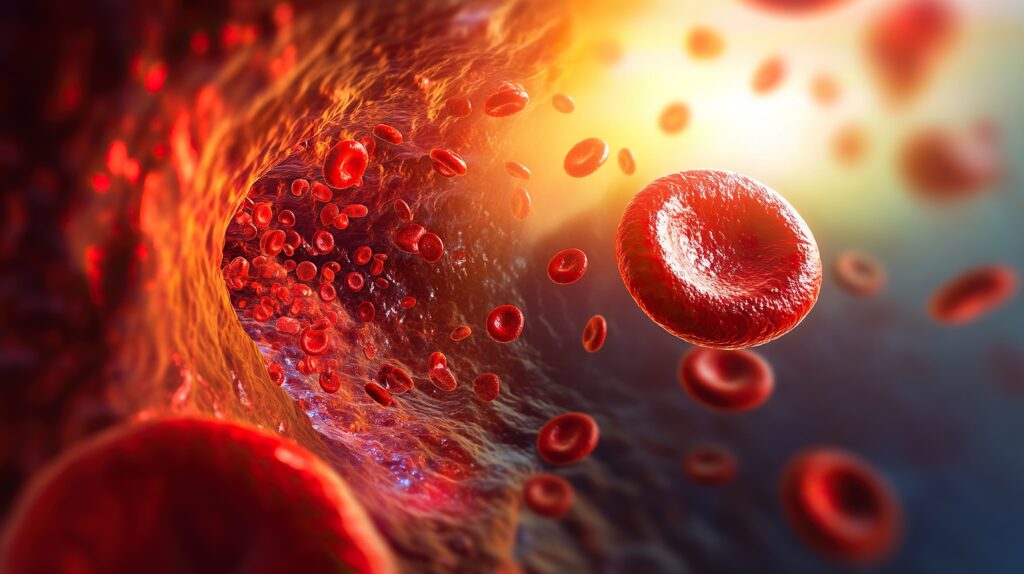
Very few trials in the history of medical science have altered the treatment landscape as profoundly as the UK Prospective Diabetes Study (UKPDS). Even 44 years after its inception, the trial and post-study follow-up findings continue to fascinate and enlighten the ...
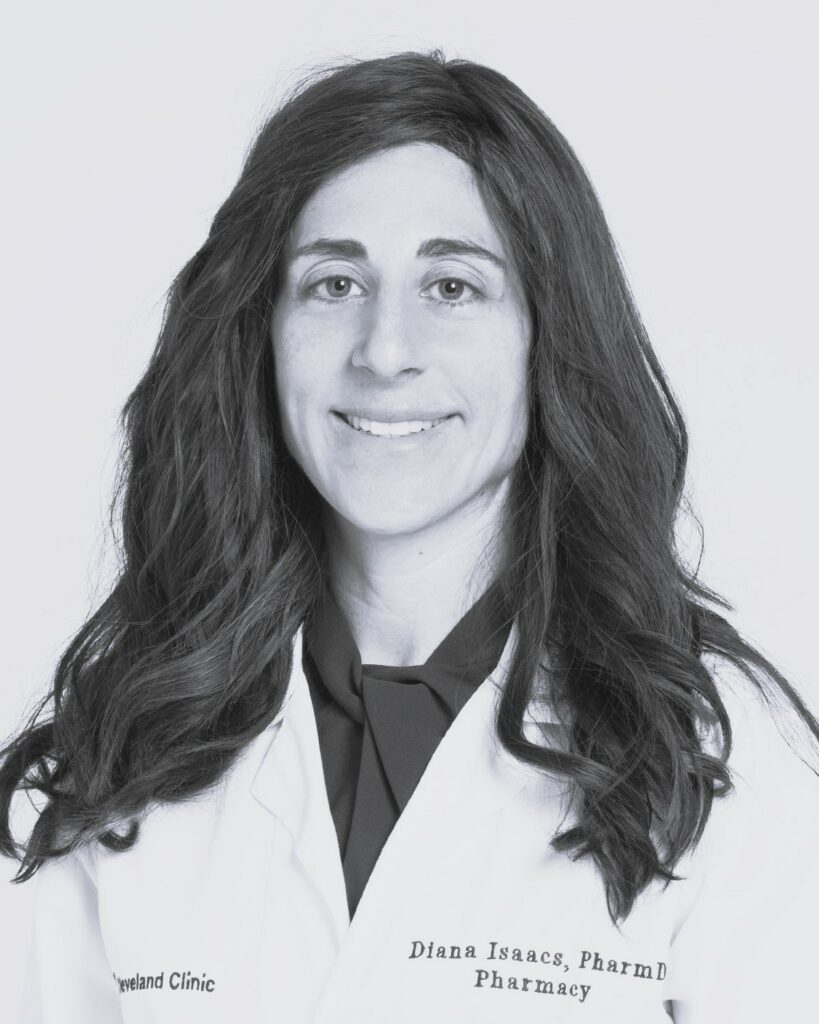
It is with great pleasure that we present this latest issue of touchREVIEWS in Endocrinology, which brings together a diverse array of high-quality articles focused on the evolving landscape of endocrine disorders. The importance of patient-centred care is exemplified in ...

Dry eye disease (DED) is known as dry eye syndrome (DES) or keratoconjunctivitis sicca. According to the Tear Film and Ocular Surface Society’s Dry Eye Workshop II (TFOS DEWS II), it constitutes a multifactorial disease of the ocular surface, ...
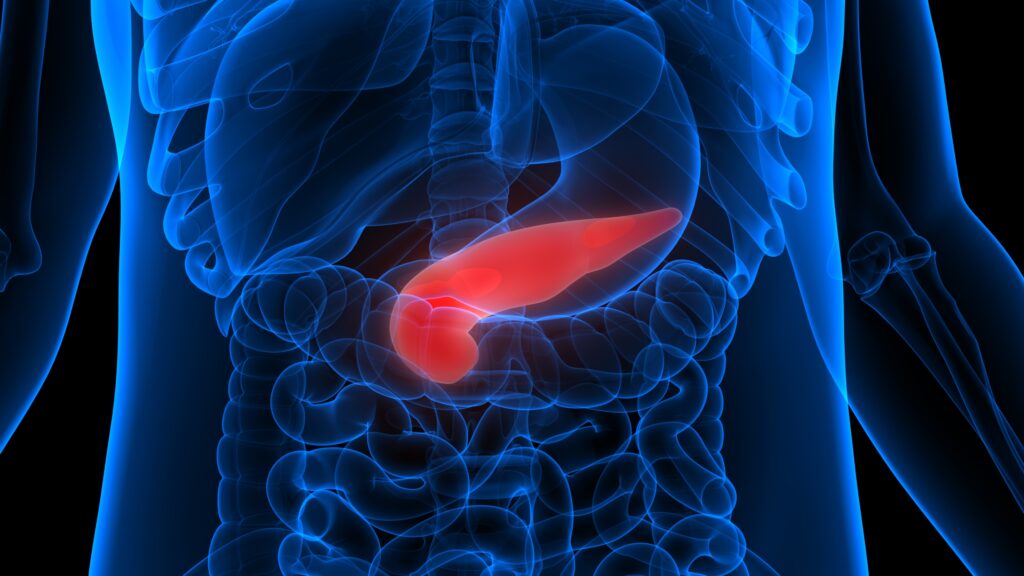
The prevalence of diabetes during pregnancy is rapidly increasing. In the USA alone, an estimated 1–2% of pregnant women have type 1 diabetes (T1D) or type 2 diabetes (T2D), and an additional 6–9% develop gestational diabetes.1 From 2000 to 2010, the prevalence of gestational ...
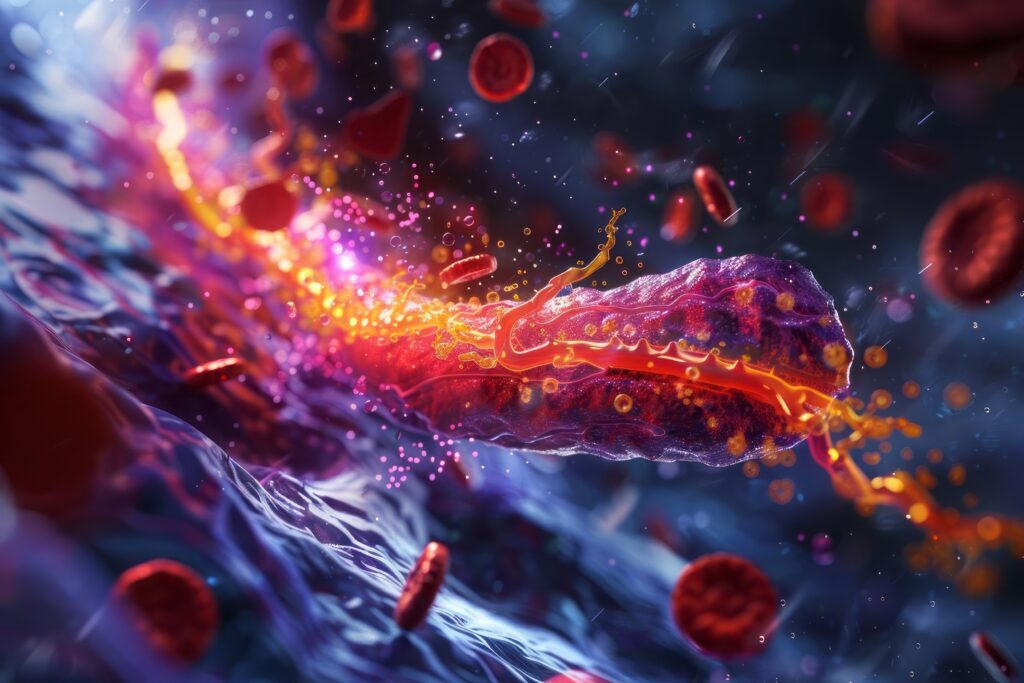
Dipeptidyl peptidase-4 (DPP-4) is a ubiquitous, multifunctional, 766-amino acid, type 2 transmembrane glycoprotein, which participates in the regulation of metabolic functions, immune and inflammatory responses, cancer growth and cell adhesion.1 It has two forms: the first is a membrane-bound form, which ...
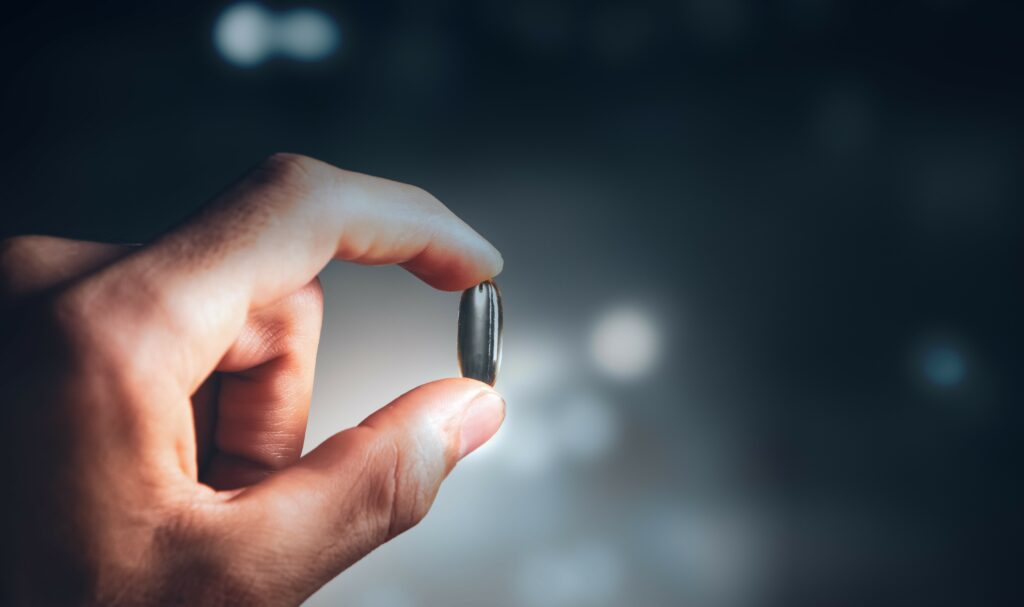
Metformin Metformin has been recommended as the first-line glucose-lowering agent for the management of type 2 diabetes (T2D) for several decades due to its efficacy and safety profile.1–3 In fact, metformin has been widely used as an insulin-sensitizing agent for ...

Welcome to the latest edition of touchREVIEWS in Endocrinology, which features a range of review, case report and original research articles that highlight some key developments in our understanding and management of endocrinological disease. We begin with a commentary from ...

Type 2 diabetes (T2D) continues to pose an ever-greater global health challenge, with 1.31 billion individuals predicted to be living with diabetes globally by 2050; the majority of whom will have T2D.1 Closely linked to T2D is metabolic dysfunction-associated steatotic ...

Gestational diabetes mellitus (GDM) is generally defined as “any degree of glucose tolerance with onset or first recognition during pregnancy”.1 It currently is one of the diseases with the highest morbidity among pregnant women.2 Determining its prevalence has been a ...
Latest articles videos and clinical updates - straight to your inbox
Log into your Touch Account
Earn and track your CME credits on the go, save articles for later, and follow the latest congress coverage.
Register now for FREE Access
Register for free to hear about the latest expert-led education, peer-reviewed articles, conference highlights, and innovative CME activities.
Sign up with an Email
Or use a Social Account.
This Functionality is for
Members Only
Explore the latest in medical education and stay current in your field. Create a free account to track your learning.

